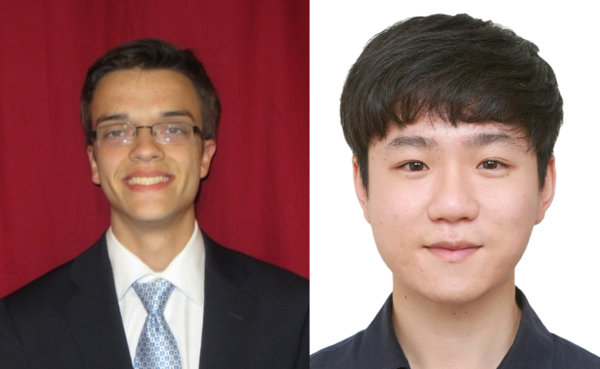
Seminar: Seth Goodnight and Seung Uk Kim
- Event Type
- Seminar/Symposium
- Sponsor
- Department of Atmospheric Sciences
- Location
- 2079 NHB
- Date
- Feb 15, 2022 3:30 pm
- Views
- 33
Seung Uk Kim: Moisture Sources of the US Midwest During Hydrologic Extremes
Drought and flood are two extreme hydrological events that severely impact the Central United States (US). They are especially critical to the US Midwest, due to the region’s intense agricultural production. Anomalous moisture transport from oceanic and terrestrial sources is known to be responsible for the development of hydrological extreme events. In this study, we use two-layer dynamic recycling model (2L-DRM), a simple analytical model that tracks moisture, with 41-year ECMWF Reanalysis v5 (ERA5) data to identify the moisture sources of the Midwestern United States. We find a very different contribution of terrestrial and oceanic sources by season. Terrestrial sources are mainly contributing during the warm season (April – September) while oceanic and lake sources contribute during the cold season (October – March). With the exception of the Pacific source, other subregions’ average daily moisture contribution and their variability increases in the warm season. We selected pentads of extreme hydrological events during the warm season. We define drought as prolonged soil moisture deficit and flood as high precipitation accompanied by excessive soil moisture. The increase in the oceanic sources due to anomalous flow formed by a strong trough covering the continent was observed during two flood cases in 1986 and 1993. Not only oceans, but the land surface along the flow also provided additional moisture. On the other hand, two drought cases in 1988 and 2012 showed a large decrease in terrestrial sources. A large ridge was responsible for reducing moisture import from climatological sources. Interestingly, sources from the Great Lakes showed an increase during drying periods of the two drought cases, and provided significant moisture to help recover from severe dryness in 2012.
Seth Goodnight: Quantification of QLCS Tornadogenesis and Environments
The skillful anticipation of tornadoes produced by quasi-linear convective systems (QLCSs) is a well-known operational forecasting challenge. It is possible that tornado warning potential depends on the generalized mechanism of QLCS tornadogenesis, namely, horizontal shearing instability and stretching (H&S) and tilting and stretching (T&S). The manual identification of the tornadogenesis mechanism of 530 QLCS tornadoes was performed using heuristic yet process-driven criteria based on single Doppler radar (WSR-88D) data. This included 214/213/103 tornadoes that occurred during 2019/2017/2016, respectively. As a function of genesis mechanism, 36% of QLCS tornadoes appear to have formed via H&S, and 60% appear to have formed via T&S; the mechanism of the remaining 4% could not be determined, based on our methodology. It was found that approximately 30% of the H&S cases were operationally warned prior to tornadogenesis compared to 44% of the T&S cases. This is believed to be related to the attributes of the associated tornadic vortices: T&S produced vortices that were stronger and had a larger vertical extent than those produced through H&S. It was also found that T&S tornadoes were more common during the warm season and displayed a diurnal, midafternoon peak in frequency. A complementary effort to explore the environmental characteristics of QLCS tornadogenesis revealed that both mechanisms were supported in similar environments. The exception was pre-tornadic frontogenesis, which was more prominent for cool-season H&S cases, and suggestive of a more significant role of the larger-scale meteorological forcing in the vertical vorticity that fosters the H&S tornadogenesis.